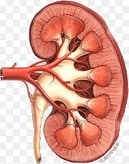
Global animal health market set to be worth $44.2 billion by 2020
pharmafile | July 5, 2018 | News story | Manufacturing and Production, Sales and Marketing | Antibiotics, agriculture, animal, health, meat, pharma
The global animal health market is predicted to reach a value of $44.2 billion dollars by 2020, according to analysts at Informa’s Agribusiness Intelligence.
In the face of efforts to reduce the quantities of antibiotics used, the animal health market is set to grow as demand for meat has increased exponentially in developing nations such as Brazil, Russia, India and China. Despite the growth of veganism and vegetarianism among affluent consumers in western nations, demand for meat has increased around the world since the beginning of the 21st century.
The rapid and exponential growth of GDP in developing countries in recent years has created increased demand for meat worldwide as an expanded middle class with additional disposable income has driven growth in the agricultural industry.
The growth of the agricultural industry has in turn fuelled increases in use of antibiotics which are used to ensure safe and high-quality meat for human consumption. While the majority of antibiotic usage is undertaken responsibly, overuse of the medications may be problematic in the future.
China in particular has been pointed to as an irresponsible user of antibiotics in animals. Despite concerns relating to antibiotic resistance, it is estimated that nearly half of the 210,000 tonnes of antibiotics produced in China are used in the production of meat alone. In comparison, 407.7 tonnes of antibiotics were used in the United Kingdom while 15,358 tonnes were used in the United States.
While the use of antibiotics ensures high-quality and low cost meat for human consumption, the widespread use of antibiotics has raised concerns regarding resistance, as food animals increasingly show resistance to the most commonly used antimicrobial drugs. As such, focus has been shifted towards better management and new technologies in an endeavour towards reducing the utilisation of the drugs.
However, while attention has increasingly been directed towards the use of enzymes, prebiotics, probiotics, synbiotics, organic acids and phytochemicals, antibiotics will likely see continued use in coming years due to their efficiency in ensuring the safety of food. Nevertheless, antimicrobial peptides, phages and vaccines paired with high-quality nutrition and good management may allow for the gradual phasing out of antibiotic medications in the longer term.
Louis Goss
Related Content

FDA approves IMIDEX’s AI-powered device VisiRad XR
The technological pharmaceutical company IMIDEX has been granted clearance from the US Food and Drug …

Artiva Biotherapeutics announces FDA clearance of IND for AlloNK and Rituximab combo
On 16 August 2023, the US Food and Drug Administration (FDA) officially cleared Artiva Biotherapeutics’ …

Novartis acquires Chinook Therapeutics for $3.5bn
Swiss pharmaceutical company Novartis has entered into an agreement and plan of merger with US-based …








